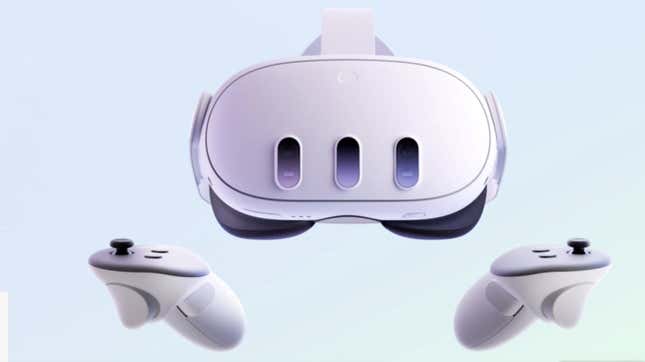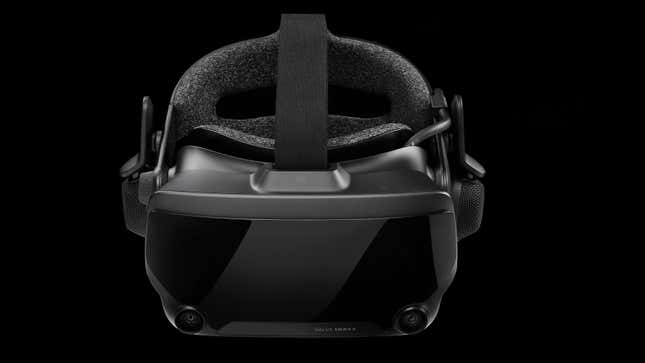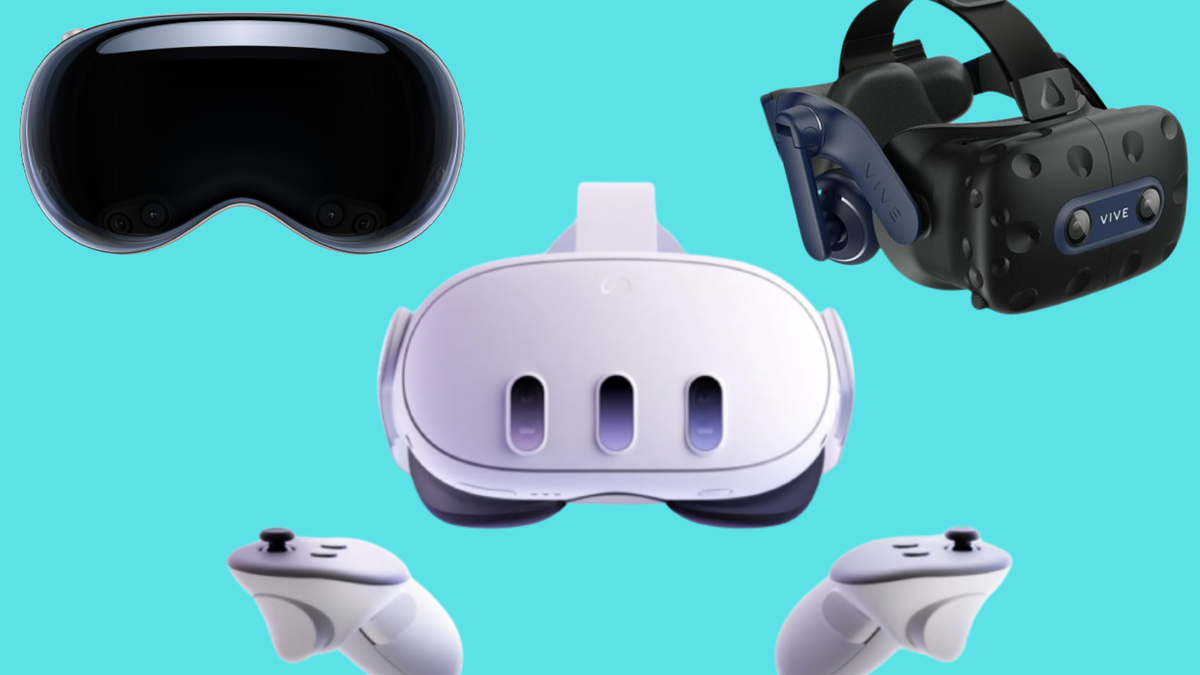Consumers hoping to take their first steps into virtual reality (or upgrade their current VR setup) are facing a dilemma: Buy a standalone system like the Meta Quest 3 when it goes on sale Oct. 10, wait for the Apple Vision Pro planned for release in 2024, or go with an already available wired VR rig like the Valve Index Vive Pro 2.
Like most “which one should I buy?” decisions, the answer depends on what you’re looking for. To help break down the pros and cons of each system, I talked virtual reality with Eric Alexander, a longtime VR developer and CEO of VR music platform Soundscape.
Pros and cons of the Meta Quest 3 VR headset

The Quest 3 from Meta is a standalone headset that starts at $499 for a model with 128GB of storage and $649 for the 512 GB model. Unlike other VR systems, it doesn’t require a separate PC or game console, so users can jump into VR immediately without being wired to another device. The Quest 3 is backwards compatible with older versions of the Quest, including the Quest 2, by far the most popular VR headset ever produced, so there will be an abundance of software available immediately upon its release.
The main selling points of the Quest 3 are its ease-of-use and its price—at $500, it’s half the cost of a Valve Index (not including the PC you need for the Index to work), so it’s by far the cheapest way to get into current-get VR.
But being inexpensive comes with a downside, according to VR developer Alexander: “‘Value’ is a word that often comes along with quality. If you’re looking for the best value of hamburgers, you’re looking at McDonald’s, and I don’t think there’s a lot of people out there who would say McDonald’s makes the best hamburger.”
The Quest 3’s 2064 x 2208 display is an improvement over the 1832 x 1920 stats of the Quest 2, and it features a better chipset (Snapdragon XR2 Gen 2 vs. Snapdragon XR2 Gen 1), but according to Alexander, that isn’t enough power for “serious” virtual reality experiences.
“The reality with these devices is, they’ve always been thermally limited by the amount of heat coming out the battery, coming out the processor, and coming off your face,” Alexander said. “So you’re really looking at about a 50% increase over the Quest 2 in the most important metric, which to me is efficiency per watt, but the device is already so underpowered to begin with. Even improving it by 200% wouldn’t really make a meaningful difference.”
According to Alexander, the Quest 3 is a novelty tier device, but that’s not necessarily a bad thing. “It all depends on what your expectations are. If you’re looking for a novelty, a toy, and a little fun experience you haven’t tried before, maybe the Quest is totally fine for you to just dip your toes in the VR, see what the fuss is about.”
Who should buy a Meta Quest 3?
If you’ve never used VR before and you’re not super tech-savvy, the Quest 3 is the obvious choice. The relatively low price point and ease of use beat all the competition.
Pros and cons of wired VR Headset like the Vive Pro 2 or Valve Index

Tethered VR rigs like the Valve Index and the HTC Vive Pro 2 vary in price depending on the brand. For headsets alone, the Vive costs $799 and the Index costs $499. But for a full set-up with controllers and a charging station, you’re looking at a range of $1,000–$1,400 for these two brands. These kinds of VR headsets offer higher resolution graphics than wireless systems—5K on a Vive versus the Quest 2’s 1080p—and can use whatever software your computer can run.
Because tethered headsets aren’t carrying their processors and batteries with them, they weigh less than standalone systems, so in general, people find the Vive and Index more comfortable and ergonomic than Meta standalone headsets.
The main downsides to an Index or a Vive Pro 2 are the tether and the price. There’s something to be said for turning on VR and using it anywhere compared to booting up your computer and your headset and having to stay in one place so they can work together.
Then there’s the price: Since these devices are, in a sense, monitors strapped to your face instead of independent acting computers, how well they perform depends on the quality of the PC they’re connected to.
“You have to have the right hardware behind it,” explained Alexander, “or it’s like taking a race car out to the track and putting an engine in it from a Honda Civic.”
Bottom line: If you don’t already have a PC with a decent graphics card and processor, you’ll need to upgrade those as well, raising the price of your VR experience significantly.
A wired VR setup may be superior to a Quest 3 being used as a standalone system, but the Quest 3 (and 2) can be connected to a PC through a cable or wirelessly, just like a Vive and Index can.
How the overall experience of using higher-end, PC-based VR programs with a Quest 3 stacks up to the Vive Pro 2 or Index remains to be seen.
Who should buy a Vive Pro 2 or Valve Index?
These rigs are best for someone who already has a gaming PC and wants to try out the next-level of possibilities of virtual reality, or for those with an unlimited budget and the patience to put it all together.
Pros and cons of the Apple Vision Pro

Apple getting into the VR game is such a seismic tech event, it’s worth talking about even though we don’t know the Apple Vision Pro’s release date beyond “sometime in 2024.” What’s more, we still don’t have all the details on what it will be able to do.
With the Vision Pro, Apple is aiming for a different vibe than other VR companies. The focus is on augmented reality, not complete immersion in artificial reality—something you’ll actually use as part of your day-to-day life, as opposed to offering an escape from it.
Judging from what Apple has announced so far, the Vision Pro will feature a mix of wired and wireless functionality, a unique operating system, and easy integration with existing Apple products. It’s all powered by a dual chip system featuring the M2 used in Apple’s Mac line, and new product called R1. It also looks sleek—like a pair of designer ski goggles, rather than a weird black box strapped to your face.
All that Apple-y coolness comes with a hefty price tag: The Apple Vision Pro is expected to retail for $3,499, more than ten times the price of current industry leader the Quest 2.
The price alone is enough to make many take a “wait and see” (or “wait forever”) approach, but according to Alexander, the price isn’t as outrageous as it might seem at first,
“You’re getting some really high end hardware that just doesn’t exist anywhere else,” he said. “People are used to spending $3,000 on a MacBook Pro, so here’s a new kind of device that’s equally special, equally powerful in certain ways. At that same price point.”
Who should buy an Apple Vision Pro?
If you like to be on the cutting-edge of technology, and are ready to deal with the “we still need to work that out” hassles that come with it, and also you don’t balk at that price point, wait for the Apple Vision Pro.

